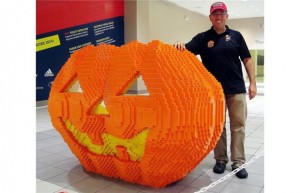I’m sure we all remember playing with Lego as a kid, maybe some of us even continue to build with the little blocks today.
Lego is over fifty years old; an impressive feat as it is baffling how a simple toy can successfully survive during this digital revolution our society is experiencing. How does Lego sustain itself amongst all the high-tech video games and digital entertainment? The answer lies in the company’s strategic tactics, a business topic we’ve often discussed in our Comm 101 class.
Although Lego has been substantially successful in the long run, they have encountered bumps along the way. A decade ago, Lego was on the verge of collapse. The company quickly realized their mistake and determined they were becoming too diversified. Michael McNally, brands relations director for Lego, states that “we lost our focus” (Lee). Lego had tried to make T-shirts, shoes, video games, books… and when their patent ran out in 1983, they lost their monopolistic advantage and McNally realized Lego “couldn’t sustain its diversified model” (Lee).
From then on, Lego realized their main goal should be creating customer loyalty by building a strong “customer community” (Lee). Since that realization, Lego has solely been creating bricks, focusing on their brand image. McNally claims the company has realized that “where we really benefit is from the heritage and nostalgia people have for the brand” (Lee).
For an interesting read and some cool pictures of Lego creations, check out Jenny Lee’s Vancouver Sun article “Lego continues to tap into the timeless appeal of imagination”.

